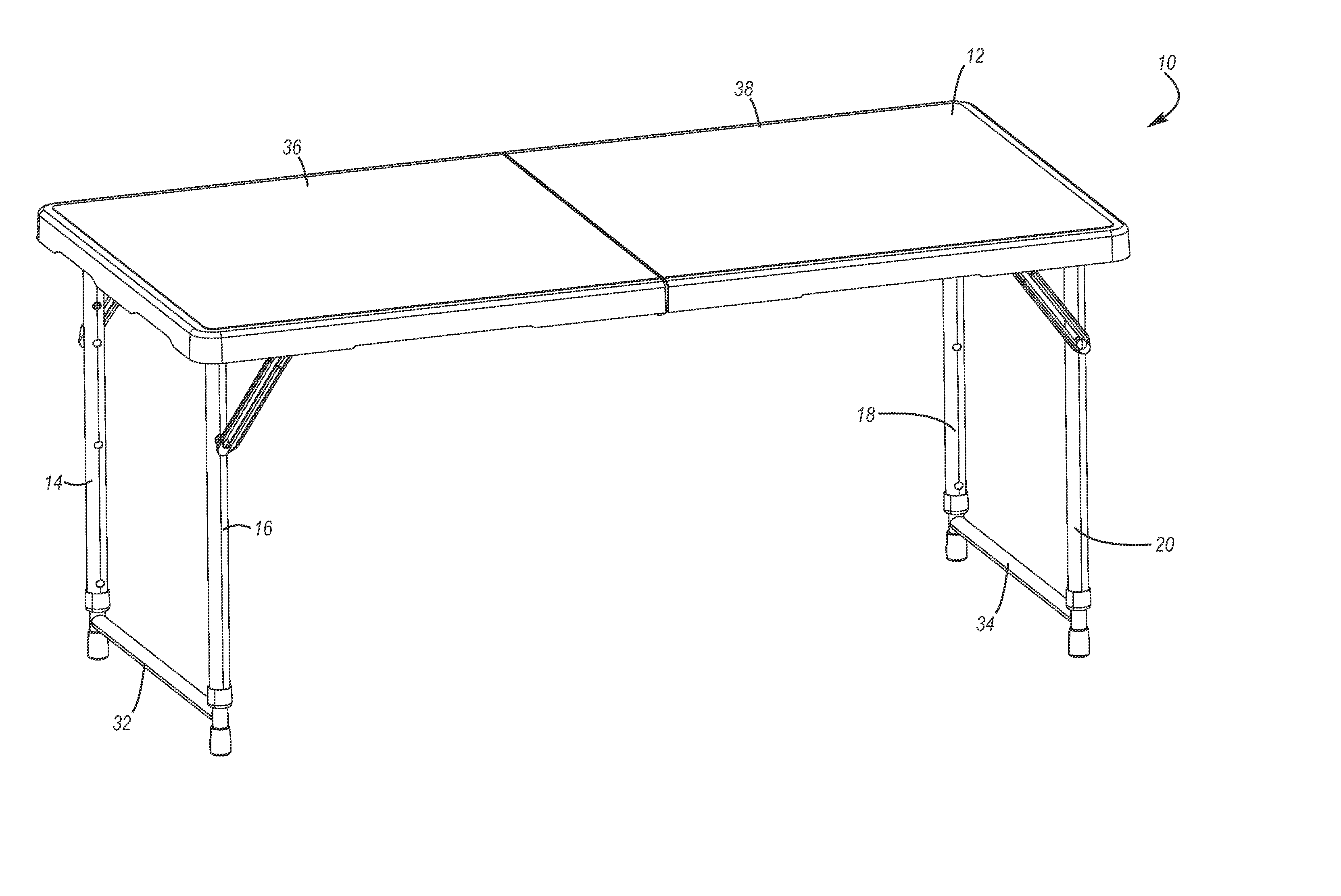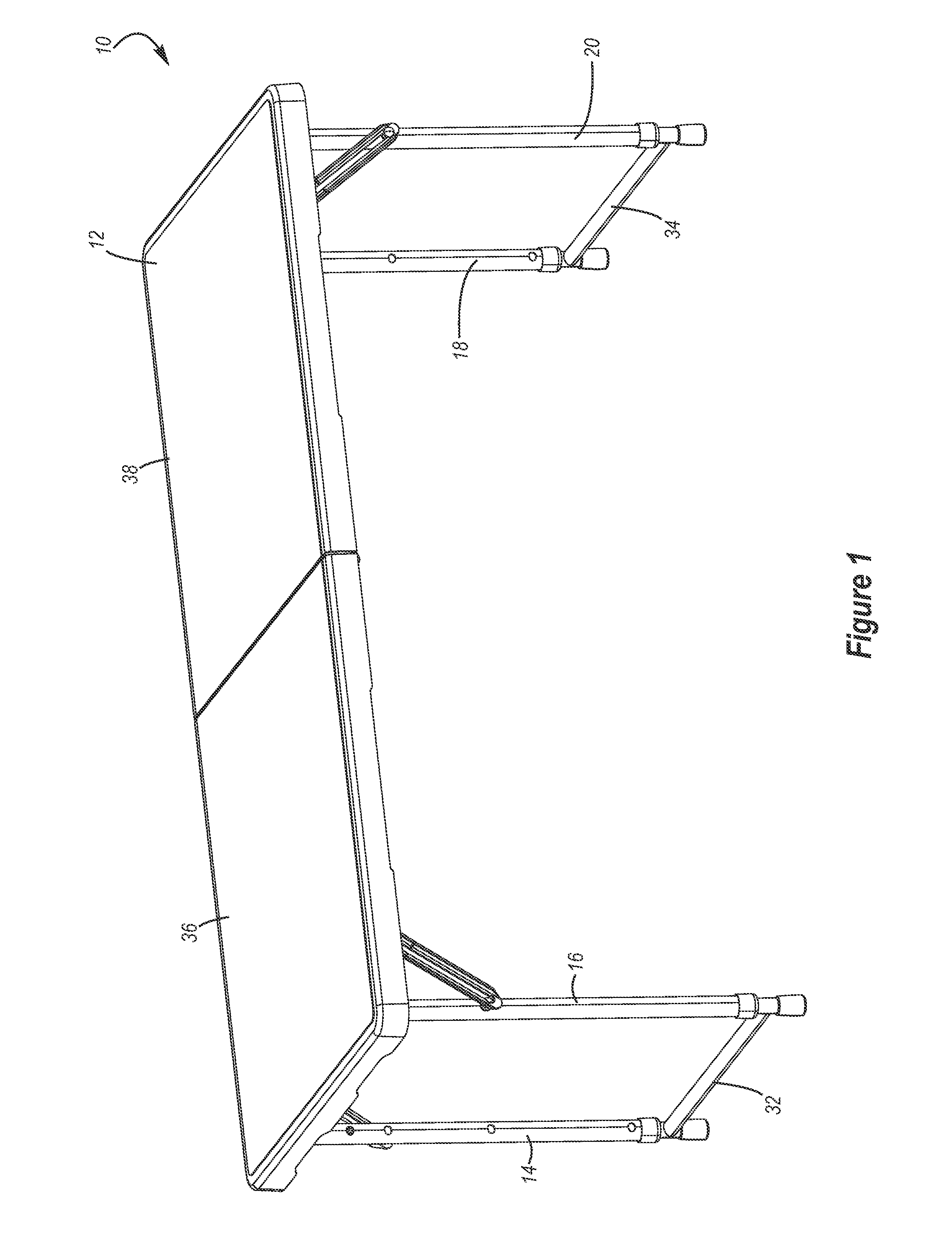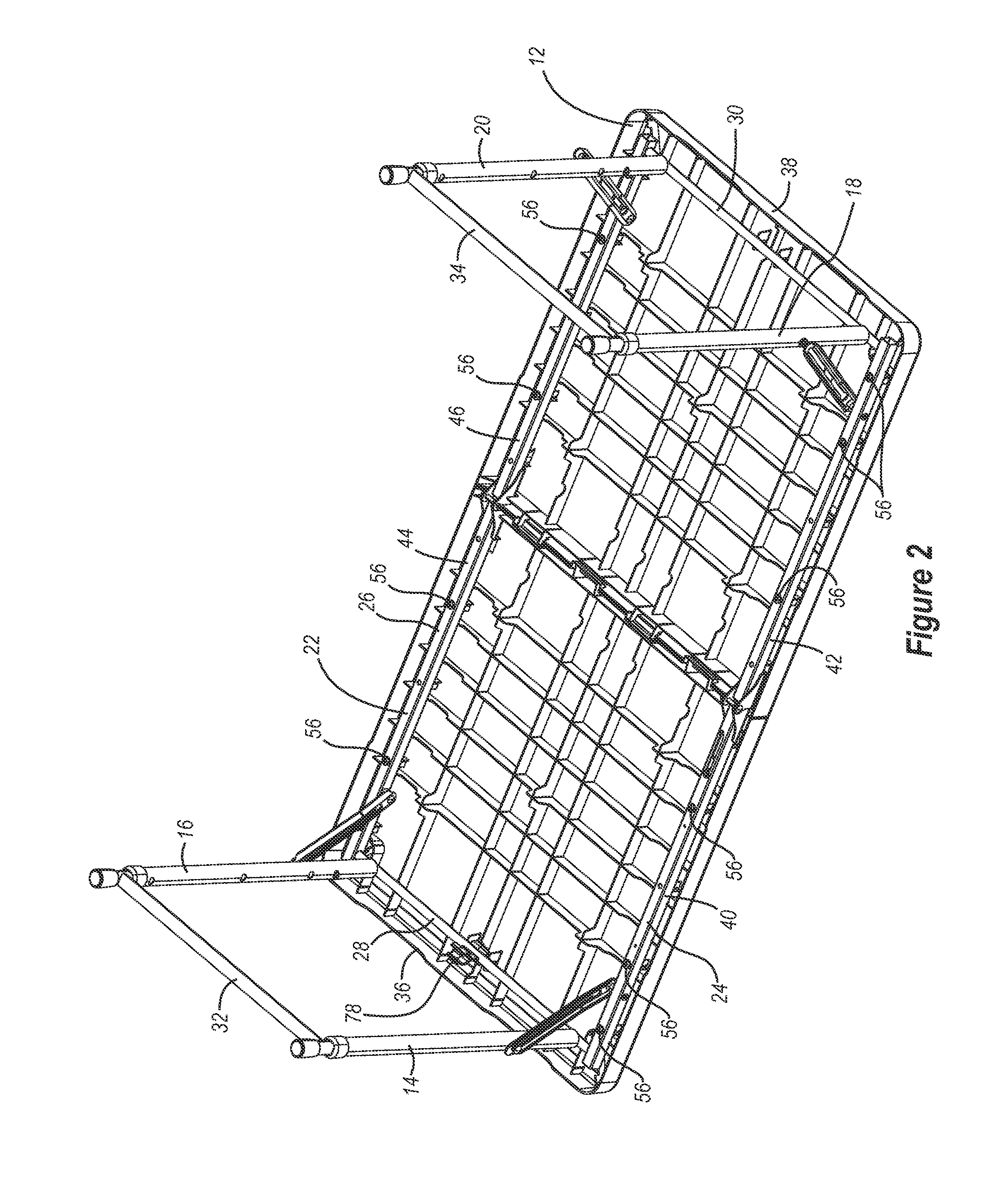[0010] One aspect is a table that may include a table top and one or more legs. The legs may be movable between an extended or use position and a collapsed or storage position. The table top may be constructed from plastic and is preferably constructed using a
compression molding process. The table top, however, may be constructed from other materials and / or other molding or manufacturing processes, if desired. The table top may include a pair of table top sections and the table may be folded in half for more efficient storage and / or shipping.
[0012] Still another aspect is a table that may include a molded table top with one or more ribs. The molded table top preferably includes a pattern of ribs and the pattern of ribs may include portions that are different than other portions. For example, the table may include a frame connected to the table top and the pattern of ribs may be denser or spaced closer together
proximate a central portion of the table top. The ribs may also be spaced closer together the farther the ribs are spaced from the frame. Advantageously, this may allow the ribs and / or frame to be sized and configured to provide a table top with generally consistent strength and / or rigidity. In addition, the ribs may have different shapes, sizes, configurations and arrangements depending, for example, upon the positioning or the ribs, whether the table includes a frame and the intended use of the table. For instance, the ribs may be thicker or more closely spaced to provide additional strength and / or rigidity, or the ribs may be thinner or spaced a larger distance apart to provide decreased strength and / or rigidity. Because the ribs may have different shapes, sizes, configurations and arrangements, the amount of plastic required to make the table top may be reduced. In particular, if a portion of the ribs are spaced apart a greater distance, then that may reduce the amount of plastic required to mold the table top.
[0013] A further aspect is a table that may include a molded plastic table top and a layer may be attached to the table top. The layer, which may also be an insert or cover, may be attached to an upper surface and / or sides of the table top. The layer may hide cosmetic defects, provide a visually attractive appearance, be used for decorative purposes, and the like.
[0017] Still another aspect is a table that may include a table top, a frame and bosses that may be used to position and / or attach the frame to the table top. For example, the bosses may contact, abut and / or engage a portion of the frame to position the frame in the desired location and / or the bosses may attach the frame to the table top. The table top may also include one or more ribs and the ribs may be sized and configured to strengthen, reinforce and / or increase the rigidity of the table top. The ribs may also be used to help position and / or attach the frame to the table top. For instance, a portion of the frame may contact, abut and / or engage the ribs to help position the frame in the desired location and / or to help attach the frame to the table top. By contacting, abutting and / or engaging the bosses, ribs or other portions of the table top, such as a downwardly extending lip, the frame may be quickly and easily positioned a desired location and / or attached to the table top.
[0018] Yet another aspect is a table that may include a table top, frame,
fastener bosses and ribs. The bosses may be spaced apart from the ribs, if desired. This may allow, for example, the frame to be spaced apart from the ribs, which may help reduce stresses applied to the ribs.
 Login to View More
Login to View More  Login to View More
Login to View More 


